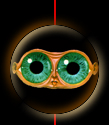
USING INTERNET/INTRANET TECHNOLOGIES IN THE MANAGEMENT OF CORPORATE INFORMATION SYSTEMS
Contents:
- Basic Internet & HTML
- Internet Technology and Services
- The World Wide Web
- Editing Web pages
- Basic tags
- Links
- Images and color
- Advanced HTML
- Tables
- Image maps
- Frames
- The Common Gateway Interface
- The HTTP protocol
- HTML forms
- The Common Gateway Interface
- Basic tags
- Basic PERL
- JavaScript Programming
- Using JavaScript with HTML
- Events
- Navigator objects
- Variables, expressions and operators
- Functions and methods
- Introduction to Java programming language
- Java applets
- The Java language
- Types and variables
- Objects and classes
- The Abstract Windowing Toolkit (AWT)
- Introduction to VRML 2.0
- Building Primitive Shapes
- Building Text Shapes
- Transforming Shapes
- Controlling Appearance with Materials
- Adding Anchors to Your World
- Building Shapes out of Points, Lines, and Faces
- Animating worlds
^^ Top ^^
<< Back
<<

PUBLISHING WEB PAGES WITH HTML
Contents:
- Internet technology and services
- The World Wide Web: Web page and HTML
- Structure and basic elements of a Web page
- Text format
- Links
- Using images in Web pages
- Advanced HTML elements
- Tables
- Frames
- Inserting multimedia elements
- Creating and using formulas.
- Stile sheets
- Publishing and promoting web pages.
- Programming languages on the Web: Java, JavaScript, ActiveX, VBScript,VRML
- Servers
^^ Top ^^
<< Back
<<

DIGITAL
TECHNOLOGY FOR COMMUNICATION
Contents:
- The information - Computer Science
- The synthetic image - Fundamentals of 3D visualisation
- Photographic imagery - Digital treated
- Digital video
- Digital Sound
- Digital music
- 3D Animation
- Networks - Communications
- Internet (services)
- Internet (Creating and managing servers)
Applications:
- Communication and corporate identity
- Industrial design
- Architecture and urbanisation
- Geographical information systems
- Simulating and visualisation of data.
- Virtual reality and video games
- Multimedia
^^ Top ^^
<< Back
<<

THE
WORLD OF THE COMPUTER IMAGE: NEW DIGITAL TECHNOLOGIES FOR VISUAL
COMMUNICATION.
Contents:
- The evolution of the use of information and the processes of communication.
- Computer + computer science + image = computer graphics
- Generation of synthetic images
- The processing of digital images.
- Postproduction
- The use of computer graphics, it's applications
- Local Virtual Environments on a network.
^^ Top ^^
<< Back
<<

ENGINEERING THE IMAGE
Contents:
- Some history
- The digital study into the word of producing videos and films
- Advanced services on networks.
- Experiences of GIGA:
- Corporate identity and industrial design
- Design system of
athletic stadiums
- Design system for floors
- Computer architecture
- Corporate video
- Typographic recuperation
- Visualisation of scientific data
- Design system for illumination: Augmented reality.
- Stereoscopic
- Processing satellite images
- Internet servers.
^^ Top ^^
<< Back
<<

MULTIMEDIA: PRODUCTION AND DEVELOPMENT
Contents:
- Information and digital representation.
- Communication of information and multimedia
- Design and production of multimedia applications
- Software and hardware for the development of applications
- Application areas
- Development environment in Spain
- Multimedia and information networks
^^ Top ^^
<< Back
<<

LOCAL AREA NETWORKS: MICROSOFT
Contents:
- Basic network concepts
- Operating systems based on networks
- Working on a network using Windows NT
- Configuration of protocols
- Windows 95 client side in the Microsoft network
- Windows 95 server side
- Resolving problems
- Interconnection with other machines
- The principal of GroupWare: Microsoft Exchange 4.0
^^ Top ^^
<< Back
<<

ADVANCED SERVICES ON EXTENDED AREA NETWORKS
Contents:
- Introduction to intranets.
- Real time audio on InterNET: I-Phone
- Real time video: Videoconferencing
- Virtual network environments: VRML
- A programming language for networks InterNET: JAVA
- MBone used as a work tool
- Intranet security
^^ Top ^^
<< Back
<<

ELECTRONIC ARCHIVING USING ADOBE ACROBAT
Contents:
- On-screen paper
- Preparation of data
- Acrobat Distiller and Capture
- The visual interface: Acrobat Exchange
- Acrobat Reader, Catalog and Search
- Presentation on the WWW
- Production in CD-ROM
^^ Top ^^
<< Back
<<

ACCESS
Contents:
- Databases: General concepts
- Fundamentals of tables
- Fundamentals of formulas
- Fundamentals of reports
- Fundamentals of enquiries
^^ Top ^^
<< Back
<<

ADVANCED ACCESS
Contents:
- Design of a database
- Design of formulas
- Design of reports
- Design of enquiries
- Fundamentals of macros
- Security in Access
^^ Top ^^
<< Back
<<

INTRODUCTION TO THE PROGRAMMING
LANGUAGE C
Contents:
- General introduction
- Data and variables
- Sequential composition
- General structure of a C program
- Introduction to the functions of the C library
- Conditional composition
- Selection composition
- Interactive composition
- Functions
- Field of variables
- Types of added data
- Management of dynamic memory
- Files
- Introduction to registers, stacks, strings
- Standard C libraries
- Advanced topics: Resource, separate compilation
^^ Top ^^
<< Back
<<

PROGRAMMING IN C++
Contents:
- The paradigm of object orientated programming
- Declarations and constants
- Expressions and states
- Functions and achieves
- Classes
- Derived classes
- Overload of operators
- Standards
- Control of exceptions
- Streams
^^ Top ^^
<< Back
<<

VISUAL C++
Contents:
- General introduction
- Application generator: AppWizard
- Class library: MFC 4.1
- The philosophy of the interchange of messages in Windows
- Use of classes and messages: ClassWizard
- Development tools
- Creation of dialogue windows
- Document-view architecture
- Unexplored fields: MFC 4.1
^^ Top ^^
<< Back
<<

About the Group: seron@posta.unizar.es
|

